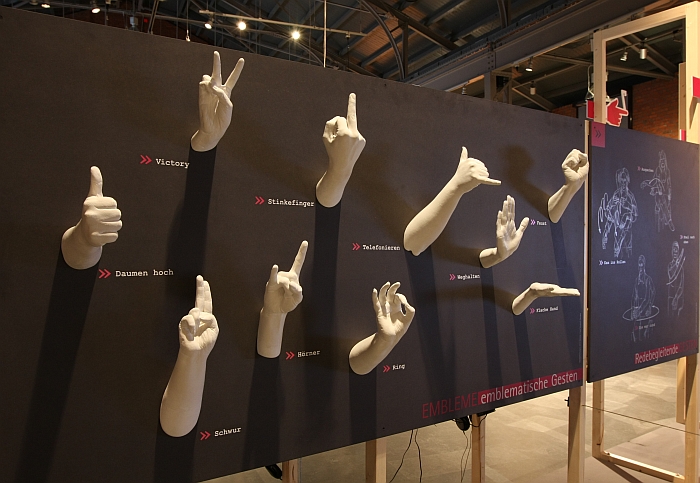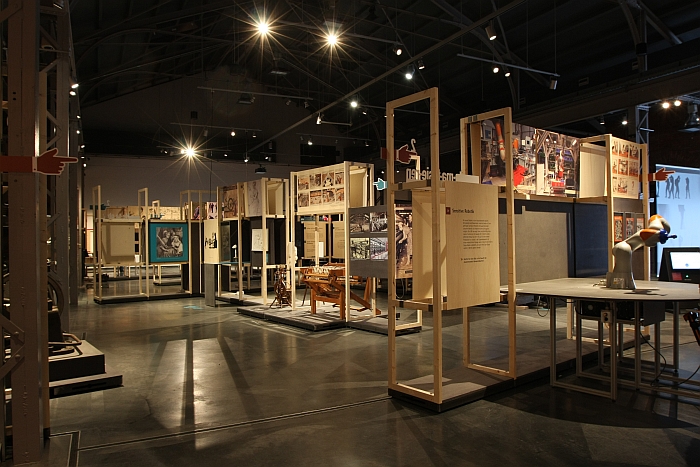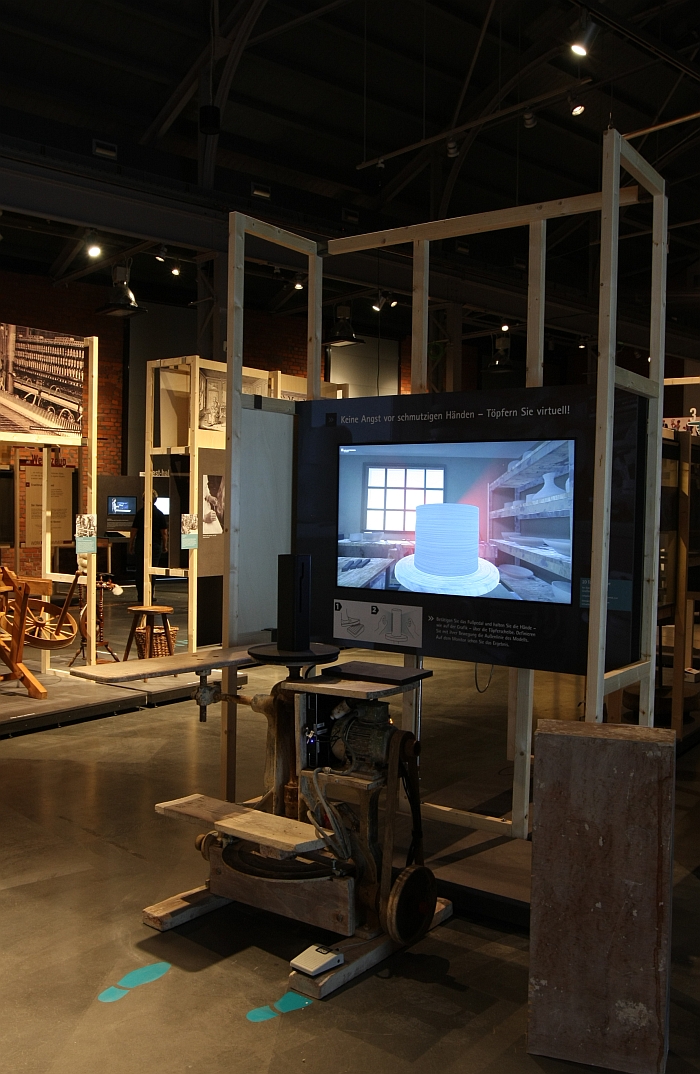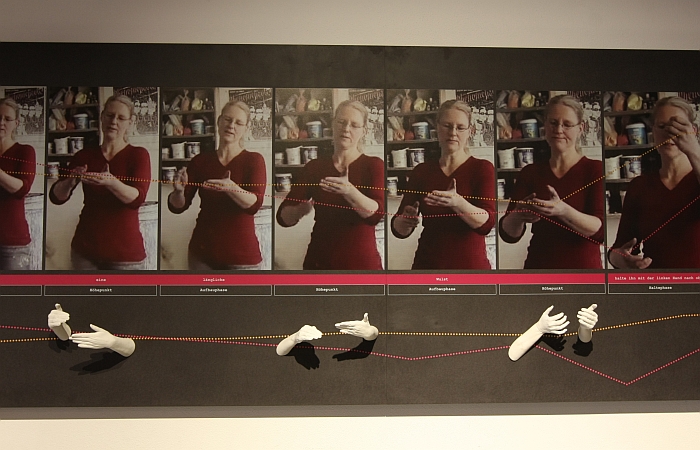Gestures – Past, Present and Future @ the Sächsische Industriemuseum, Chemnitz
👋
Gestures belong to the oldest of human actions and interactions. Have accompanied mankind through good times and bad, through its innumerate technical, cultural and social revolutions.
And are so intuitive, we are often barely aware of them.
With the exhibition Gestures – Past, Present and Future, the Sächsische Industriemuseum Chemnitz explores not only the (hi)story and importance of gestures, but for all their role in our smart, digital, autonomous futures.
Arguably communication with the hands precedes spoken communication, more certain is that throughout history cultures and peoples have continually studied gestures and sought applications of gestures, be that directly, for example, aiding and abetting a public speaker transport their message, or as metaphor, for example, the development of industrial machines as replicators of the gestures of crafts and trades. The continuation of the application of gestures, arguably both directly and metaphorically, is our contemporary gesture controlled devices. And no, not just “Swipe Left”
The exhibition Gestures – Past, Present and Future is the culmination of the somewhat unfeasibly titled research project, MANUACT – Hands and Objects in Language, Culture, and Technology: Manual Actions at Workplaces between Robotics, Gesture, and Product Design; a three year cooperation between the Professorships of Linguistics and Work Science at the Technische Universität Chemnitz, the Sächsische Industriemuseum and the Linz based “artistic-scientific think tank”, Ars Electronica Futurelab.
Although in many regards as an exhibition Gestures has a very natural, almost self-explanatory, flow over the fundamentals of academic gesture research, the history and development of gestures and on to future applications of gestures, that is too simplistic a description. Much more the exhibition weaves and bobs, continually taking the visitor from research to practice to potential/theoretical/almost inevitable applications, potential/theoretical/almost inevitable applications which in many cases said visitor is encouraged to try for themself.
In the course of our 2017 #campustour we witnessed innumerate projects involving gesture control, for all, and somewhat inevitably, in context of autonomous vehicles. While student projects and thus not necessarily always feasible, nor indeed desirable, the number and scope of projects presented was for us a clear indication of the inescapable fact that gesture control is very much a “thing” in contemporary industrial and product design.
Or put another way, will arrive sooner than you think in your media devices, lighting controls, washing machines, ovens and trouser presses.
In terms of the future of gesture controlled devices there are, arguably, two key questions: How? And how much?
The answer to the latter being largely one of self-control on the part of manufacturers. Something contemporary industry is very, very, very poor at, but which we still haven’t given up hope they might eventually understand.
The answer to the former is in many regards the essence of Gestures, and a question which neatly underscores the importance of interdisciplinary research as we move hastily towards our brave new smart autonomous world.
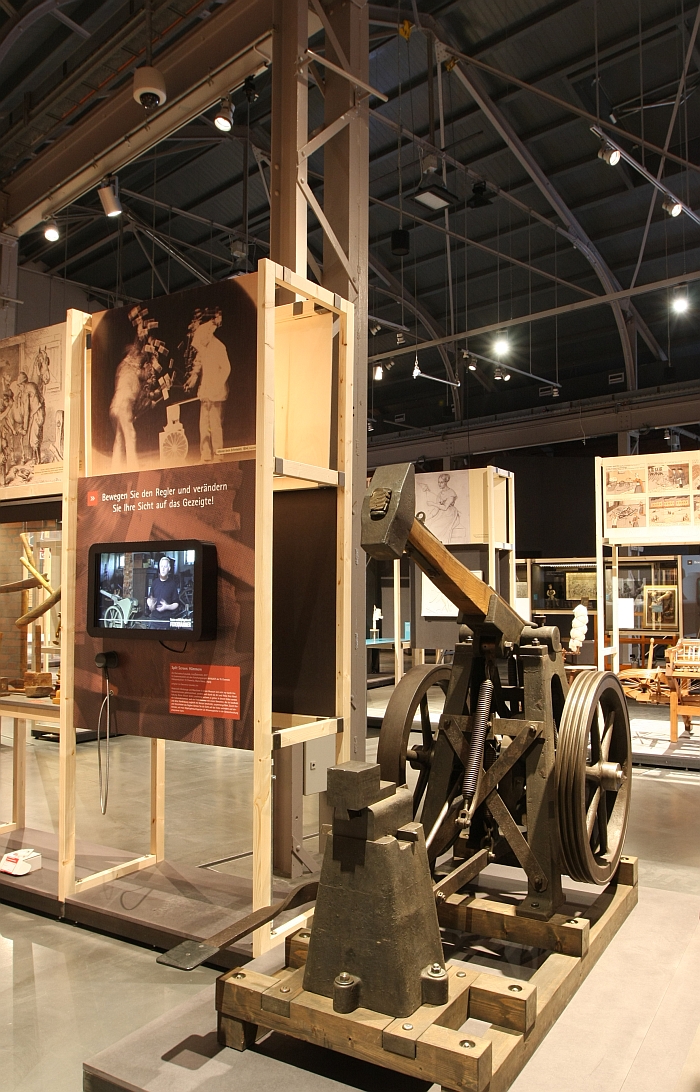
An industrial hammer as metaphor for the smith’s gesture, as seen at Gestures – Past, Present and Future at the Sächsische Industriemuseum Chemnitz
An interactive exhibition in the truest sense one can, and indeed must, should, experience the multitude of installations, including, and amongst many others, conversing with a smart gesture controlled production robot, pottering at a virtual potter’s wheel, and controlling an aeroplane with hand gestures: installations which neatly highlight that meaningful gesture control requires more than technical innovation to enable the translation of a body movement to a machine movement, but classic linguistic research to allow the technicians to understand which body movements should be translated.
And by extrapolation, that the best gestures for gesture controls are the most intuitive.
The methodology of identifying, refining and transferring these intuitive gestures is explained from various perspectives in the course of the exhibition, as are the various types of gestures, how generations past adapted and applied intuitive gestures and how contemporary researchers are adapting and applying intuitive gestures; thereby helping explain that obvious as the use of an intuitive gesture for gesture control may be, getting it right is anything but self-explanatory.
And also how increasing use of gesture control will not only affect our relationships to machines, devices, objects, something neatly underscored for example by the demonstration of tactile feedback so that you know your gesture has been received and understood by your autonomous car: in the future we will increasingly need confirmation from machines, thus altering the man-machine communication cycle. But also our relationship to gestures, a currently, often, subconscious part of our daily communication becoming as it will part of wider social and economic systems.
In context of the plethora of questions which need to be faced, answered and challenged in terms of future technology, gesture control is perhaps not as contentious as artificial intelligence or autonomy, is however a key factor, one which is already influencing society and will continue to do so. And thus one we need to understand.Something Gestures makes very clear.
Contemporary methods of tracking gestures, as seen at Gestures – Past, Present and Future at the Sächsische Industriemuseum Chemnitz
In addition to the fundamental exploration of gestures past, present and future, the MANUACT project was also undertaken with the declared aim of strengthening the cooperation and exchange between academia and museums, if you will of bringing scientific research into the public domain.
Consequently as an exhibition Gestures presents scientific research. And thus work normally presented to fellow researchers in established academic contexts and formats. Not in an interactive exhibition aimed at a varied, popular audience
Does it work? Do the results carry from the relative dryness of the academic world?
Very much so. An intelligently realised, logically presented and accessible exhibition, for all the interactivity as a necessary extension of the theory helps bridge the gap between academia and us lays, thereby bequeathing the presentation its validity.
And what does Prof. Dr. Ellen Fricke, head of the MANUACT project and Professor of Germanistic at the TU Chemnitz, hope visitors take with them?
“When we consider autonomous cars and other autonomous robots with gesture control, it is also a question of the effect on communication between individuals, how does it affect us? And here we hope to inform visitors about the forthcoming changes in society and make the complexity of the themes accessible and understandable so that visitors can then participate in the discourse.”
Sentiments we can only agree with. And something Gestures allows.
Or put another way
👌 👍
Gestures – Past, Present and Future runs at the Sächsische Industriemuseum, Zwickauer Straße 119, 09112 Chemnitz until Sunday March 4th
Full details, including information on the accompanying fringe programme can be found at www.gesten-im-museum.de
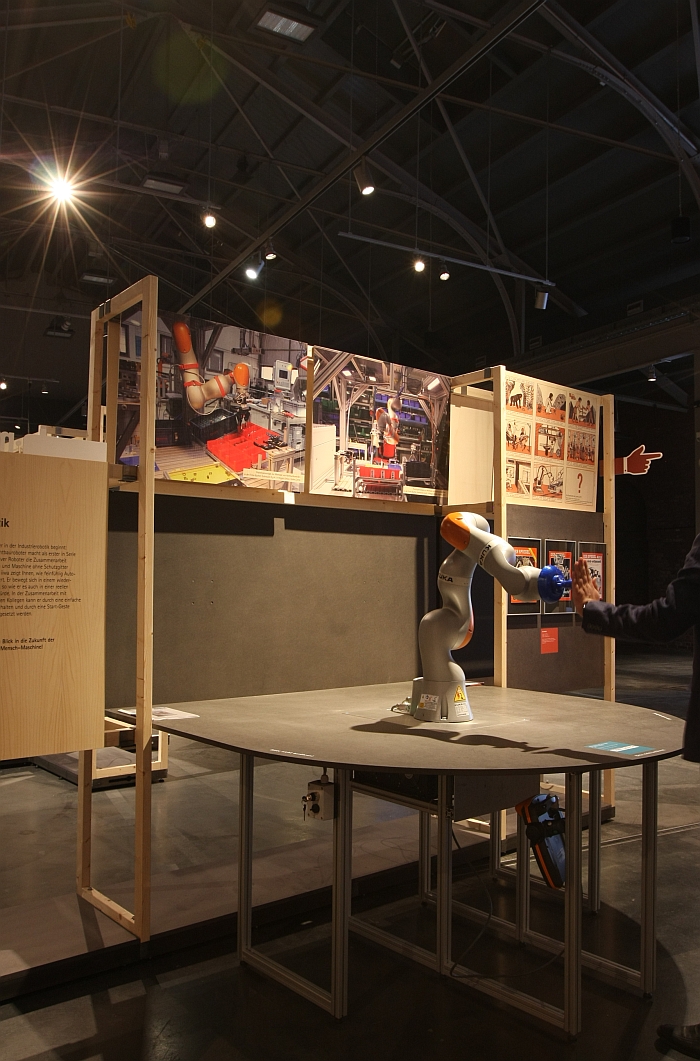
Controlling a gesture controlled robot, as seen at Gestures – Past, Present and Future at the Sächsische Industriemuseum Chemnitz
Tagged with: chemnitz, Gestures, Sächsische Industriemuseum Chemnitz
